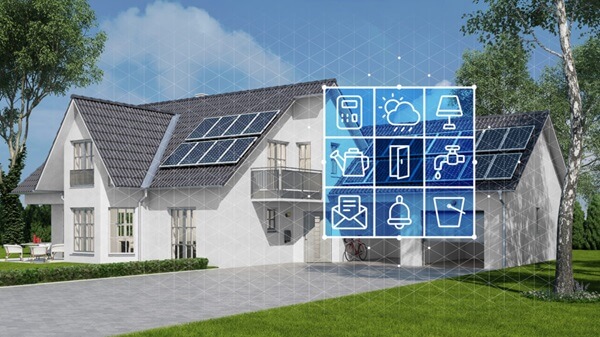Are Smart Home Technology Systems Used in Nursing Homes?

The rapid advancement of smart home technology has revolutionized the way we live, providing enhanced convenience, security, and efficiency in our daily lives. While initially designed for private residences, these technologies are increasingly being integrated into nursing homes and assisted living facilities. The aim is to improve the quality of care, enhance safety, and streamline operations for both residents and staff. This article explores the use of smart home technology systems in nursing homes and the benefits they bring to these environments.
The Integration of Smart Home Technology in Nursing Homes
Nursing homes are tasked with providing a safe, comfortable, and supportive environment for elderly residents. The integration of smart home technology systems into these facilities is becoming more common as administrators and caregivers recognize the significant advantages they offer. These systems can monitor health, ensure security, facilitate communication, and even automate routine tasks, contributing to a more efficient and responsive care environment.
How Smart Home Technology Enhances Nursing Homes
- Health Monitoring and Management
- Vital Signs Tracking: Smart devices can continuously monitor residents’ vital signs such as heart rate, blood pressure, and oxygen levels. This data is collected and analyzed to detect any anomalies that may require medical attention.
- Medication Reminders: Automated systems can remind residents to take their medications at the prescribed times, reducing the risk of missed doses or medication errors.
- Fall Detection: Sensors and wearable devices can detect falls and immediately alert caregivers, ensuring prompt assistance and reducing the risk of injury.
- Enhanced Security
- Surveillance Systems: Smart cameras and motion detectors can monitor common areas and private rooms, ensuring the safety of residents by detecting unauthorized access or suspicious activity.
- Access Control: Smart locks and access control systems can prevent unauthorized entry into restricted areas, enhancing overall security within the facility.
- Improved Communication
- Intercom Systems: Smart intercom systems facilitate easy communication between residents and caregivers, allowing for quick response times in case of emergencies or routine needs.
- Video Calling: Smart devices equipped with video calling capabilities enable residents to stay connected with their families and friends, promoting social interaction and reducing feelings of isolation.
- Automation of Routine Tasks
- Lighting and Climate Control: Automated lighting and climate control systems can adjust the environment based on residents’ preferences and needs, ensuring comfort and energy efficiency.
- Smart Appliances: Devices like smart refrigerators, ovens, and washing machines can streamline daily chores, making the environment more manageable for both residents and staff.
Benefits of Smart Home Technology in Nursing Homes
The integration of smart home technology systems in nursing homes offers numerous benefits, including:
- Enhanced Safety and Security: Continuous monitoring and automated alerts help prevent accidents and ensure that help is always available when needed.
- Better Health Outcomes: Continuous health monitoring and timely medical interventions can improve residents’ overall health and well-being.
- Increased Efficiency: Automation of routine tasks reduces the workload on caregivers, allowing them to focus more on personalized care.
- Improved Quality of Life: Smart technologies can provide a more comfortable and engaging environment, enhancing residents’ quality of life.
Potential Challenges and Considerations
While the benefits of smart home technology in nursing homes are substantial, there are also challenges and considerations to address:
- Privacy Concerns: The use of surveillance and monitoring devices can raise privacy issues among residents. It is essential to balance safety with respect for personal privacy.
- Cost of Implementation: Installing and maintaining smart home systems can be expensive. Nursing homes must evaluate the cost-benefit ratio and seek funding or partnerships to support these upgrades.
- Technological Literacy: Both staff and residents may need training to effectively use smart home technology. Ongoing education and support are crucial to ensure smooth operation.
- Data Security: Protecting sensitive health and personal data from cyber threats is paramount. Robust cybersecurity measures must be in place to safeguard information.
Key Smart Home Technologies for Nursing Homes
Here is a list of key smart home technologies that are particularly beneficial in nursing home settings:
- Wearable Health Monitors: Devices that track vital signs and physical activity.
- Smart Cameras: Surveillance systems for monitoring common areas and rooms.
- Automated Medication Dispensers: Systems that dispense medications at scheduled times.
- Smart Locks and Access Control: Enhanced security measures to restrict unauthorized access.
- Voice-Activated Assistants: Devices like Amazon Echo or Google Home that assist with daily tasks and communication.
- Environmental Sensors: Devices that monitor temperature, humidity, and air quality to ensure a comfortable living environment.
- Smart Lighting: Automated lighting systems that adjust based on time of day or occupancy.
- Emergency Call Systems: Panic buttons and other devices that allow residents to quickly summon help.
Conclusion
The integration of smart home technology systems in nursing homes is transforming the way care is delivered. These technologies offer significant benefits, including enhanced safety, better health outcomes, increased efficiency, and improved quality of life for residents. However, it is crucial to address challenges such as privacy concerns, cost, technological literacy, and data security to ensure successful implementation. As technology continues to evolve, nursing homes that embrace smart home solutions will be better equipped to provide high-quality, personalized care to their residents.
Source: “Embracing Smart Home Technology for Aging in Place” https://med-alerts.com/blog/smart-home-technology-for-aging-in-place/
